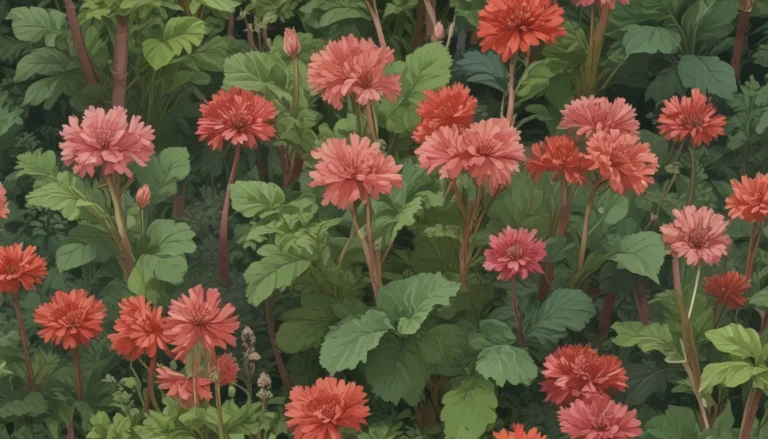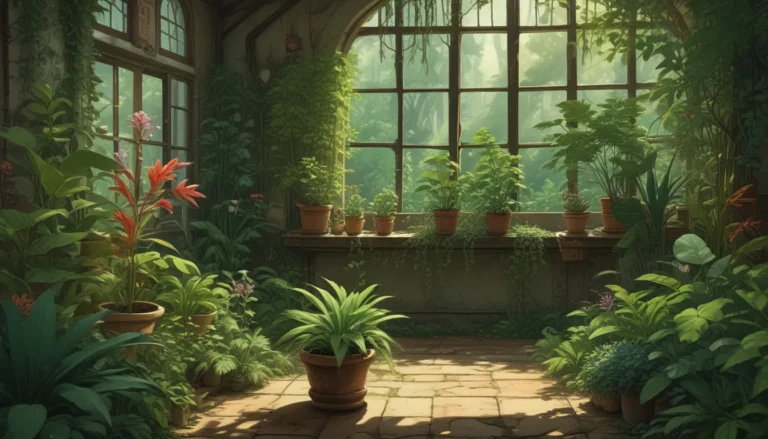A Comprehensive Guide to Growing and Caring for Hostas

Hostas, also known as the plantain lilies or funkias, are among the most popular perennials around the world. Loved for their beautiful foliage, hostas come in a variety of sizes, colors, and patterns, making them a versatile and foolproof choice for any garden. In addition to their stunning leaves, hostas also produce lovely flowers in shades of purple, pink, red, yellow, lavender, and white, adding an extra touch of beauty to any landscape.
If you’re interested in growing hostas and want to learn more about their cultivation, propagation, and care, you’ve come to the right place. In this guide, we’ll cover everything you need to know about growing these shade-loving perennials, including valuable tips, maintenance guidelines, and recommended cultivars.
Cultivation and History of Hostas
Hostas have a rich history dating back centuries in China, Japan, and Korea. With over 8,000 named cultivars and hybrids and 42 recognized species, hostas have become a beloved plant around the world. Known for their diverse leaf textures, colors, and patterns, hostas offer a wide range of options for gardeners to choose from.
When it comes to growing hostas, it’s essential to consider their preferred growing conditions. While they can adapt to a variety of environments, hostas thrive in partially shaded areas with moist, well-draining soil. They come in various sizes, ranging from miniature plants less than six inches tall to giant varieties over 28 inches tall.
One interesting fact about hostas is their edibility. In Japan, various parts of the hosta plant are consumed, with young shoots being a particular delicacy. However, it’s important to note that while hostas are safe for human consumption, they are toxic to dogs and cats.
Propagation Methods for Hostas
Hostas can be propagated through divisions, seeds, or transplants. Division is a common method that involves splitting existing plants into smaller sections and replanting them. This process is best done in the spring or fall, when the plants are actively growing. Additionally, hostas can be grown from seeds, although most commercially available varieties are propagated through tissue culture or divisions. Transplanting bare root hostas is also a popular option, especially when ordering plants online or from catalogs.
How to Grow Hostas Successfully
Growing hostas successfully involves providing them with the right growing conditions. While hostas are shade-loving plants, they require some sunlight to thrive. Most cultivars prefer partial sun to partial shade, although some varieties can handle full sun. It’s essential to ensure that hostas receive adequate moisture, as they have large leaves that require a good amount of water. Additionally, using a well-draining soil mix and incorporating organic compost can help hostas thrive.
Valuable Tips for Growing Hostas
When it comes to maintaining hostas, there are a few key tips to keep in mind:
- Keep the soil moist but not wet.
- Choose the right sun exposure based on the cultivar.
- Fertilize in the spring with a balanced slow-release fertilizer.
- Consider planting hostas in containers for easy mobility and maintenance.
Pruning and Maintenance of Hostas
Hostas are relatively low-maintenance plants, requiring minimal pruning and care. Flower spikes can be removed after they have faded, and dividing plants is only necessary if they become overcrowded or overgrown. It’s crucial to monitor for pest and disease issues, such as deer, rabbits, slugs, snails, and common diseases like anthracnose and crown rot.
Recommended Cultivars and Varieties
With thousands of named cultivars and hybrids available, choosing the right hosta for your garden can be overwhelming. Some popular options include:
- ‘Sum and Substance’: A reliable variety with large purple blossoms.
- ‘August Moon’: Ideal for full sun conditions.
- ‘Guacamole’ and ‘Fragrant Bouquet’: Featuring intensely fragrant white blossoms.
- ‘Regal Splendor’: Known for its lavender bell-shaped flowers.
Experimenting with different cultivars can add diversity and beauty to your garden, so don’t be afraid to try new varieties.
Managing Pests and Diseases in Hostas
While hostas are relatively resistant to pests and diseases, some issues can affect them. Common pests such as deer, rabbits, slugs, and snails can damage hostas, leading to leaf destruction and plant decline. Diseases like anthracnose, crown rot, and Hosta Virus X can also impact plant health. Implementing proper pest management strategies, such as physical barriers or natural predators, can help control these issues and protect your hostas.
Best Uses for Hostas in the Garden
Hostas are versatile plants that can serve various purposes in the garden, including:
- Adding color and texture to shady areas.
- Creating moon gardens with white-edged varieties.
- Growing in containers as focal points or ground covers.
- Pairing with other plants like roses or bulbs for a beautiful combination.
With their adaptability and aesthetic appeal, hostas are excellent choices for gardeners looking to enhance their landscapes.
In conclusion, hostas are easy-to-care-for perennials that offer a wide range of colors, sizes, and textures. By following the guidelines outlined in this comprehensive guide, you can successfully grow and care for hostas in your garden. Whether you’re a novice gardener or a seasoned plant enthusiast, hostas are a fantastic addition to any landscape, providing beauty, variety, and low maintenance for years to come.
Remember to experiment with different cultivars and propagation methods to discover the joy of growing and enjoying these beloved shade-loving perennials.
Incorporating detailed information, valuable tips, and practical recommendations, this comprehensive guide aims to educate readers on the cultivation and care of hostas. By following the guidelines and suggestions provided, gardeners can enhance their gardening experience and successfully grow these popular shade-loving perennials.





